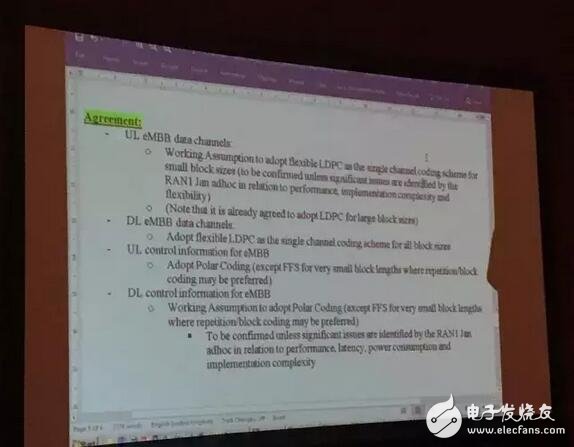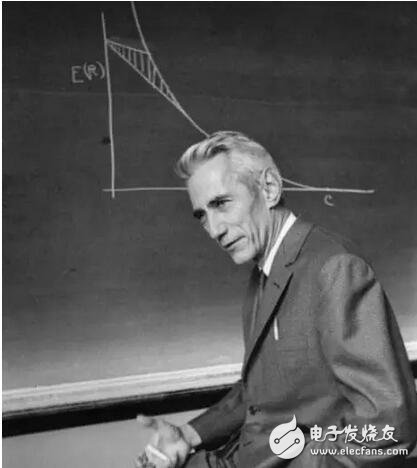Huawei won the 5G era misreading! How far is Polar Code from the 5G standard?
On November 18th, 2016, at the 3GPP RAN1#87 meeting just ended in Reno, Nevada, the international mobile communication standardization organization 3GPP finalized the 5G eMBB (Enhanced Mobile Broadband) scenario after several rounds of technical discussions on behalf of the participating companies. The channel coding technical solution, wherein: the Polar Code code is used as the coding scheme of the control channel; and the LDPC code is used as the coding scheme of the data channel. New progress in Chinese standards research Coding and modulation are the most esoteric parts of wireless communication technology, and are known as the crown of communication technology. Some media commented that TD-SCDMA is the first time that Chinese communication technology has caught up with the world. For the first time, the development of TD-LTE technology has become one of the mainstream technologies in the world. However, the core long code code Turbo code and short code tail bit convolution code are not original Chinese technologies. The Polar Code code, which is based on Huawei and promoted by China, was adopted by 3GPP as the 5GeMBB control channel standard solution. It is an important progress in the research and standardization of 5G mobile communication technology in China. The Ministry of Industry and Information Technology revealed in February this year that China and the international company started the 5G R&D work simultaneously, and the first was to establish a cooperative working mechanism. A number of enterprises, universities and research institutes in China have jointly established the IMT-2020 (5G) promotion group to carry out research work on 5G requirements, technologies, spectrum and standards. The second is to carry out 5G research and development. There are many enterprises and universities that have invested a lot of resources to carry out R&D in all areas of 5G. The third is to strengthen international cooperation. At present, some universities and research institutes in China have established multi-channel and multi-level cooperation and cooperation with many countries. The Ministry will actively support domestic and foreign enterprises to carry out research and development cooperation for a new generation of mobile communication technologies. Develop a common contribution. According to the overall deployment, China's 5G basic R&D test will be conducted in 2016-2018, divided into 5G key technology test, 5G technical solution verification and 5G system verification. China is expected to launch 5G commercial use in 2020. Ericsson, Nokia, Huawei, ZTE, Samsung and other companies have developed concept prototypes for some of the 5G key technologies. What is Polar Code? In 1948, Shannon, the founder of modern information theory, published "The Mathematical Theory of Communication", marking the creation of the discipline of information and coding theory. According to Shannon's theorem, in order to reliably transmit a signal in a channel with bandwidth determined and noisy, there are two ways: to increase the signal-to-noise ratio or to add an additional error-correcting code to the signal coding. (Claude Elwood Shannon) The LDPC code is the Low Density Parity Check Code (LDPC), which is a linear block code with a sparse check matrix proposed by Dr. Robert G. Gallage in 1963. It not only has a good approximation to Shannon's limit. The performance, and the low decoding complexity and flexible structure are the research hotspots in the field of channel coding in recent years. The LDPC code was previously adopted by communication systems such as broadcast systems, home wired networks, and wireless access networks. This is the first time that it has entered the 3GPP mobile communication system. The Polar code is a new star in the coding world. It was first proposed by Professor Erdal Arikan of the University of Birken in Turkey in 2008. The paper theoretically proves for the first time in a binary input symmetrically discrete memoryless channel. Codes can "reach" Shannon capacity and have low coding and decoding complexity. At present, the polarization code is the only channel coding technology that can theoretically prove to reach the Shannon limit and has practical linear complexity coding and decoding capabilities. The core of the polarization code structure is the processing of "channel polarization". On the encoding side, the coding method is used to make each subchannel exhibit different reliability. When the code length continues to increase, some channels will tend to be close to the capacity. The perfect channel of 1 (no error), the other part of the channel tends to a purely noisy channel with a capacity close to zero, and the direct transmission of information on a channel with a capacity close to 1 to approximate the channel capacity. On the decoding side, the polarized channel can be decoded by a simple successive interference cancellation decoding method to obtain performance close to the maximum natural decoding with a lower implementation complexity. Prior to the 3GPP discussion, PolarCode (Polarization Code) was tested in China's IMT-2020 (5G) Propulsion Group 5G Phase 1 field test, including the performance of still and mobile scenarios. The test results show that the dynamic selection of the use of polarization coding and the decoding algorithm achieves stability in the scenario of short packets (large connection IoT scenarios) and long packets (high-speed mobile scenarios such as low-traffic delays such as autopilot). The performance gain improves the spectrum efficiency of the existing cellular network by 10%, and also combines with millimeter wave to reach a rate of 27 Gbps. The measured results prove that the polarization code can simultaneously satisfy the ITU's ultra-high rate, low latency, and large connection movement. Internet and Internet of Things three major application scenarios. Chinese companies have a consensus on the potential of Polar codes, and have invested a lot of research and development efforts to conduct in-depth research, evaluation and optimization of their 5G application solutions, and made breakthroughs in transmission performance. Maskking(Shenzhen) Technology CO., LTD , https://www.szdisposableecigs.com
